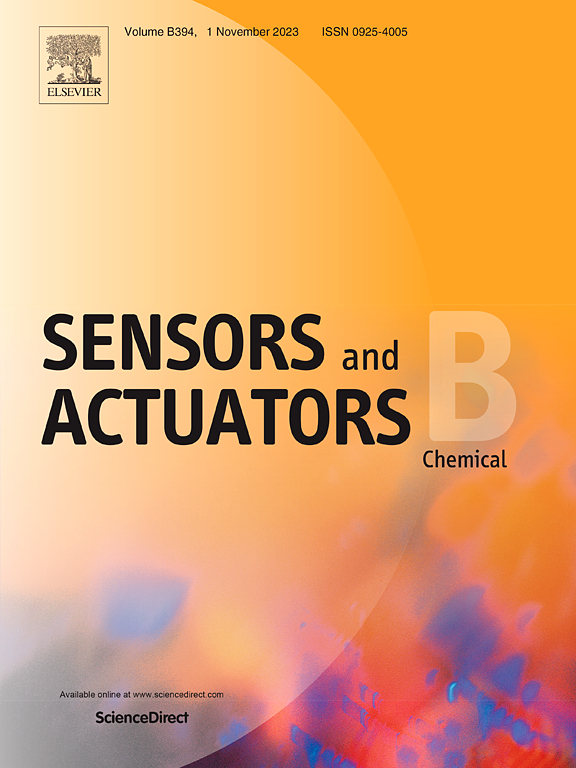Anti-sulfur poisoning electrochemical sensor for sulfur ions based on nitrogen-doped graphene-encapsulated cobalt-nickel nanoparticles
IF 8
1区 化学
Q1 CHEMISTRY, ANALYTICAL
引用次数: 0
Abstract
Electrochemical sensor for S2- based on a novel anti-sulfur poisoning strategy of “chainmail for material” was developed. Nitrogen-doped graphene-encapsulated cobalt-nickel nanoparticles (CoNi@NGs) was synthesized and used as sensing material. The graphene shells can physically isolate the core metal from the external environment to prevent formation of metallic sulfides and corrosion. In addition, CoNi@NGs is sulfurophobe and therefore repels sulfur, resulting in a self-cleaning process. Therefore, the developed sensor exhibited much better anti-sulfur poisoning performance than those reported in the literatures, as the current didn’t decrease after continuous detection of S2- 80 h with a self-developed on-line flow measurement system. The sensor had a wide S2- detection range (from 0.5 to 1000 μM) with LOD of 0.47 μM (S/N=3). It was worth mentioning that the sensor showed excellent specificity to S2- with selectivity of more than 100 to the common interfering substances in water. Finally, the developed sensor was applied to detect S2- in real water samples including industrial wastewater, pond water and seawater with recoveries of 86.9–118.1 %.

基于氮掺杂石墨烯封装钴镍纳米粒子的抗硫中毒硫离子电化学传感器
基于 "材料链 "的新型抗硫化策略,开发了 S2- 的电化学传感器。该研究合成了氮掺杂石墨烯封装钴镍纳米粒子(CoNi@NGs),并将其用作传感材料。石墨烯外壳可以将核心金属与外部环境进行物理隔离,从而防止金属硫化物的形成和腐蚀。此外,CoNi@NGs 还具有憎硫性,因此能排斥硫,从而实现自清洁过程。因此,与文献报道的传感器相比,所开发的传感器具有更好的抗硫化性能,因为使用自主开发的在线流量测量系统连续检测 S2- 80 小时后,电流并没有下降。该传感器的 S2- 检测范围很宽(从 0.5 到 1000 μM),LOD 为 0.47 μM(S/N=3)。值得一提的是,该传感器对 S2- 具有极好的特异性,对水中常见干扰物质的选择性超过 100。最后,所开发的传感器被应用于检测实际水样中的 S2-,包括工业废水、池塘水和海水,回收率为 86.9%~118.1%。
本文章由计算机程序翻译,如有差异,请以英文原文为准。
求助全文
约1分钟内获得全文
求助全文
来源期刊

Sensors and Actuators B: Chemical
工程技术-电化学
CiteScore
14.60
自引率
11.90%
发文量
1776
审稿时长
3.2 months
期刊介绍:
Sensors & Actuators, B: Chemical is an international journal focused on the research and development of chemical transducers. It covers chemical sensors and biosensors, chemical actuators, and analytical microsystems. The journal is interdisciplinary, aiming to publish original works showcasing substantial advancements beyond the current state of the art in these fields, with practical applicability to solving meaningful analytical problems. Review articles are accepted by invitation from an Editor of the journal.
 求助内容:
求助内容: 应助结果提醒方式:
应助结果提醒方式:


